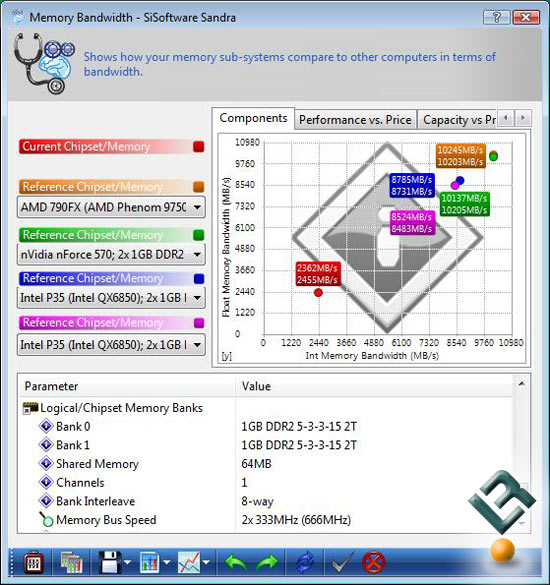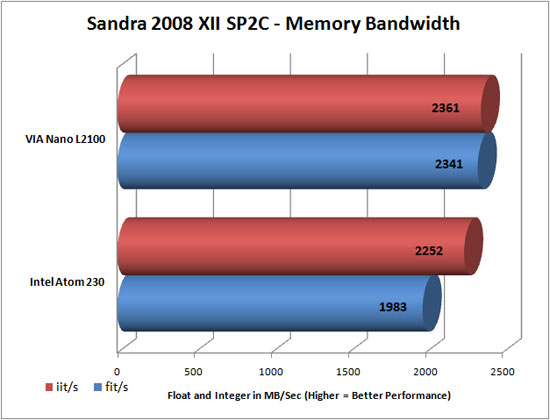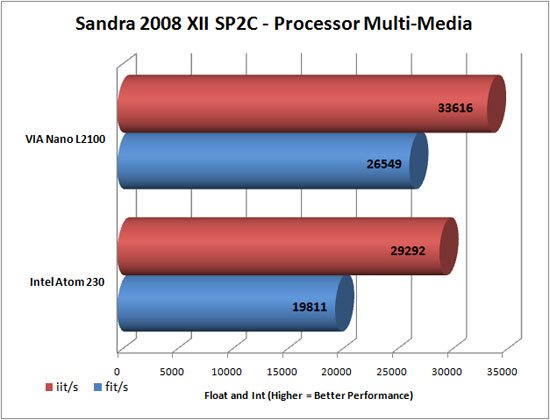Intel ATOM 230 versus VIA Nano L2100 – Battle of the Mini-ITX Platforms
Sandra XII SP2C

With Sandra XII SP2 you can now easily compare the performance of the tested device with its speed and its (published) power (TDP)! Sandra XII SP2 also has SSE4 (Intel) and SSE4A (AMD) benchmark code-paths, which is great for those of you testing next-generation AMD & Intel chips.

Results: The Intel Atom can only do 533MHz on the memory and doesn’t have any adjustment for timings, so it was bound to run slower than the VIA Nano platform. The VIA Nano L2100 had the memory running at 667MHz with CL5 timings (versus CL4 timings on the Intel platform since you can manually set them) and had the best memory bandwidth thanks to the faster frequency.
Sandra Multimedia
This benchmark generates a picture (640×480) of the well-known Mandelbrot fractal, using 255 iterations for each data pixel, in 32 colours. It is a real-life benchmark rather than a synthetic benchmark, designed to show the improvements MMX/Enhanced, 3DNow!/Enhanced, SSE(2) bring to such an algorithm. The benchmark is multi-threaded for up to 64 CPUs maximum on SMP systems. The benchmark contains many versions (ALU, MMX, (Wireless) MMX, SSE, SSE2, SSSE3) that use integers to simulate floating point numbers, as well as many versions that use floating point numbers (FPU, SSE, SSE2, SSSE3). This illustrates the difference between ALU and FPU power.

Results: Taking a look at the Processor Multi-Media test in the SiSoftware Sandra benchmark suite we see the VIA Nano L2100 processor taking the performance crown by a good margin.

Comments are closed.